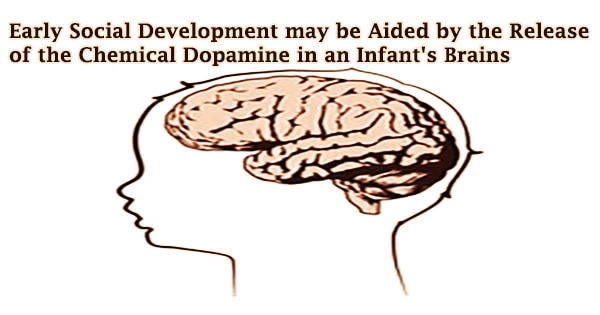A recent study in rats suggests that changing amounts of the neurotransmitter dopamine, which is most related to motivation, may help explain why stressful experiences during infancy can lead to long-term behavioral difficulties.
Negative early-life experiences in rats and other animals, including humans, have long been recognized as having an impact on subsequent social development. Limited bedding, for example, encourages mother rats to roughhouse their pups, affecting the pups’ social behavior throughout their lives, according to previous research on rats. However, it was unclear exactly what changes happened in the brain as a result of such hardship.
Repeated stress throughout childhood was linked to higher dopamine levels in the basolateral amygdala (BLA), a brain area that plays a role in memory formation, according to a study headed by researchers from NYU Grossman School of Medicine.
Our findings suggest that repeated dopamine release in the basolateral amygdala plays a key role in infant social development.
Maya Opendak, Ph.D.
Stressed pups showed almost twice as much BLA activity as those raised in a more comfortable nest when mother rats and their new pups were kept in stressful situations while parenting their young. In comparison to the latter group, the former group spent at least 90% less time near their mothers and over 30% less time around other pups.
“Our findings suggest that repeated dopamine release in the basolateral amygdala plays a key role in infant social development,” says study lead author Maya Opendak, PhD. “As a result, this region of the brain may be a promising target for understanding or even treating psychiatric disorders that can interfere with social interaction, such as autism, anxiety, and depression.”
The researchers artificially stopped dopamine release in the BLA of upset babies as part of the study and discovered that social behavior reverted to normal. Increasing dopamine levels in pups raised in non-stressful environments, on the other hand, harmed their social behavior.
Opendak, a postdoctoral research fellow at NYU Langone Health’s Department of Child and Adolescent Psychiatry, points out that increased BLA activity and social impairment happened exclusively in pups that were stressed in their mother’s presence. If they were only stressed, they exhibited no signs of these problems. The repetitive stimulation of the BLA, which is previously known to play a vital role in learning about hazards, according to Opendak, causes newborns to link their mother with danger.
“Our investigation offered us a clearer look at how specific brain mechanisms link stressful experiences during infancy to lifelong social behavior problems,” says study senior author Regina Sullivan, PhD.
“We can take this same approach to explore other areas of brain development, such as memory, learning, and threat recognition,” adds Sullivan, a professor in the Department of Child and Adolescent Psychiatry at NYU Langone.
The research team studied the behavior of hundreds of rat pups for the study, which was published online Oct. 26 in the journal Neuron. Some mouse moms were given only a few resources with which to construct their nests.
After five days of living in these stressful surroundings, the study authors recorded the amount of time pups approached their moms or classmates in a series of social behavior assessments. The longer the pups were exposed to stress, the less likely they were to approach their moms, according to the research.
Researchers utilized medicines that limit the release of dopamine in the brain to investigate the impact of the neurotransmitter throughout these early life experiences. They also used light to trigger dopamine release in specific brain cells to see how the chemical affected social behavior after being distressed.
According to Sullivan, the study team’s next step is to look at additional brain regions involved in danger and reward processing.
She points out that the study only looked at the effects of a single chemical in one brain route, and that social behavior involves a complex network of cells and other channels that are yet unknown.
The work was supported by the Brain & Behavior Research Foundation and National Institutes of Health funds K99 MH124434, F32 MH112232, R37 HD083217, and R01 AA02381.
In addition to Opendak and Sullivan, other NYU Langone researchers include Rosemarie Perry, PhD; Katherine Packard, MS; Shannon Hu, BA; Roseanna Zanca, PhD; Soomin Song, PhD; Robert Froemke, PhD; Joyce Woo, BA; Krissian Martinez, BA; Yaragudri Vinod, PhD; and Donald Wilson, PhD.
Other co-investigators are Charlis Raineki, PhD, at Brock University in St. Catharines, Ont.; Millie Rincon-Cortes PhD, at the University of Pittsburgh in Pittsburg, Pa.; Emma Wood, BA, at the Nathan Kline Institute for Psychiatric Research in Orangeburg, NY; Roseanna Zanca, BA; and Peter Serrano, PhD; at CUNY Hunter College in New York City; and Russell Brown, PhD; and Gerald Deehan, PhD, at Eastern Tennessee State University in Johnson City.





